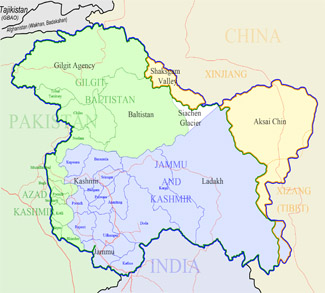Three major terrorist attacks in France in 18 months and the psychological effects of these ongoing assaults against French society are mounting. While the most impacting effects of terrorist attacks are the immediate victims who lay lifeless as a result of bomb blasts, gunfire, or, as we just witnessed during Frances beloved Bastille day celebrations in Nice, a truck as it was driven into crowds of people along the Promenade des Anglais. The other victims are those who sustain injuries but also those who go home at the end of the night, taking away visions of violence and lethality, lasting memories that can have a destructive impact on people, communities, and societies for years and decades after such an event.
Domestic and international terrorism is an ongoing phenomenon involving physical and psychological acts to change or establish power relations or dynamics in a given territory or community, no matter the size or location. Though we are all aware of the existence of terrorism as a tactic to achieve specific and often times varied political and military ends, its long-term public health ramifications are especially important, yet understudied by specialists in the fields of terrorism and security studies.
Speaking of the recent attack in Nice, Severine, mother of 13-year old Marina, told reporters that, “I looked at my children – I saw the fear in the their eyes.” Both have sought psychological assistance like many others at the children’s hospital in Nice. Another center that provides psychological support for the victims has been full since the day of the attack. Psychologist Isabelle Buchet explained that some of those they are seeing are the parents of children killed in the attack. “They can’t speak. They’re still in shock,” said Psychologist Isabelle Buchet, “[i]n an emergency like this, when it’s only been two days, it’s really just a way of letting them know they’re not alone and the door is open.”
Much of the existing literature on terrorism focuses on the direct or primary victim (with the attackers receiving significant coverage) but the impact on secondary victims who often suffer from cognitive, behavioral, and emotional outcomes, outstretches that of the both. Witnessing terrorism or terrorist acts can lead people of all ages, particularly children, (though the effects can take different forms depending on the age of the witness) and backgrounds to develop a spectrum of harmful effects. Looking at terrorism overall we can say that we all “cope” with it in one manner or another. In one way, we manage ourselves in the midst of constant threats and the fear that those threats may bring. In another way, we are forced to manage the implications of violent acts that emerge from the initial threats.
Despite states showing resilience to terrorism, there are moments when each person fears for their own safety and the people around them, whether they are family members, friends, co-workers, or acquaintances.
Helplessness and fear are the most dominant impacts on witnesses of terrorism. This feeling can be pervasive and extend from one individual to another, permeating entire communities. Given that terrorism is a random occurrence (at least to the victims or to those targeted) fear can easily be strengthened by a number of aiding factors such as population size, density, diversity, and history. A sense of belonging or being part of a community may strengthen an individual’s resolve, aid in the healing process, or diminish the effects of witnessing or being a part of a terrorist act, but it cannot necessarily shelter an individual and prevent her from being affected. In a study published in The National Center for Post-Traumatic Stress Disorder’s (PTSD) PTSD Research Quarterly, Heidi Resnick, Sandro Galea, Dean Kilpatrick, David Vlahov, wrote that, after the World Trade Center was destroyed, PTSD cases among the population of Manhattan 5-8 weeks after the attacks was about 7.5% with depression having been recorded at 9.7%.
Taking the past three terrorist cases of France over the course of a year-and-a-half, this string of violence is cultivating a deep and broad sense of vulnerability and grief that will require years of professional attention to help the victims carry on with their lives as well it ought to garner much study by scholars beyond the medical community, particularly those working the social sciences. Compounding both, but particularly the latter, stems from recurrent acts that leave societies with inadequate time for processing the events, effects, and the human loss attached to the Nice disaster. Such feelings come despite knowledge of victim identity or personal connection with someone who was killed in a terrorist event. It is difficult to claim that we are all devoid of personal connection from each other when we live in the same city or in the same country, under the same flag, even more so when the terrorists is a fellow citizen and a father of three as was the attacker named Mohamed Lahouaiej-Bouhlel.
Children, while typically more resilient than adults and adaptive to change, can also be highly impressionable and witnessing terrorism can lead them to feel a sense of constant insecurity, anxiety, as well as experience a sense of worthlessness and a sense of powerlessness. They may, like adults, feel a profound sense of anger as well as shame and sadness. Both children and adults might begin to question why they were spared and why others had to die. Thus, a tremendous sense of guilt can become attached to being alive in light of such tragic events. They can be very confusing thoughts and feelings and challenging for one to sort through alone.
Personal attitude shifts are a substantial consequence of terrorist violence and have become the cornerstone of the current migrant “crisis” affecting much of Europe and European Union (EU) states. In the weeks and months following 9/11, anti-Islamic rhetoric and sentiment became commonplace across the United States (US) and was in many cases difficult to temper of contain. Xenophobic sentiments fester and can be easily popularized or sensationalized by the governments and political figures of target states. This can be seen as a secondary form of victimization of those who witnessed terrorist events. An equally perplexing condition emerges when victims share the same ethnicity as the attackers. Xenophobia might even take on a life of its own in societies with large populations and population densities by fostering a stronger and more powerful form of distrust and fear of one another.
The American Psychological Association (APA) explains that, “[t]he fear generated by terrorism can be exacerbated by a population’s diversity if there is distrust between groups, categories and classification of citizens. It is important to recognize that diversity in a population can be an opportunity for unity and strength. There are members of our diverse society who have experienced past terrorist incidents. The knowledge and experience they have gained from surviving and coping with these incidents can make them a valuable resource on how to cope and how to offer assistance to others.
People who witness terrorist attacks and thus go through an exceptionally traumatic process might also have experienced violence or trauma in the past. Survivors of trauma can therefore be more susceptible to the effects of witnessing terrorism, whether this takes place on the street or on the television. It is difficult, if not almost impossible, to disassociate yourself from others and the events that are taking place in one’s own country because of the political, social, and cultural connections that already exists.
Shaking the memories of terrorism can be a daunting and horrifying challenge. Expectations of “getting over” such a traumatic may not always be realistic. Thoughts of a violent incident like terrorism shares many commonalities with other forms of violence like domestic violence. Recurrence can last for a long time and might never completely disappear. Memories sparked by false warnings or constant media coverage of other events of merely of the topic of terrorism itself can prolong recovery times. People can also develop a deep sense of anxiety and fear of everything around them, preventing them from living normal and healthy lives. Imbedding roadblocks into people’s lives can result in the disruption of routinized behavior or the patterns that make people comfortable and provide a positive sense of security.
In the post-9/11 world and with the rise of and growing power of extremist organizations like the Islamic State and many others, it is difficult to imagine going through our daily lives without witnessing terrorism in some form or another. The media plays no small role in proliferating the images that can have tremendously negative effects on thousands, if not millions of people, around the globe. The recovery rates of people and societies witnessing terrorism events, even major ones like 9/11, vary dramatically. It can be misleading to hold that the so-called “recovery” of a society means that each and every individual within that society has healed from an event or series of violent events.
Professor Andrew Silke, psychologist and Director of Terrorism Studies at the University of East London, United Kingdom (UK), noted that, in the wake of catastrophic attacks such as 9/11, American society overall displayed a quick recovery. “In the days immediately after the attacks, stress reactions and anxiety were very common, but these symptoms did not persist; they quickly returned to pre-9/11 levels for most. Psychologists found that the American public tended to be remarkably resilient in dealing with terrorism and this has also been the finding in regions which experience terrorist attacks on a frequent and widespread basis.”
Despite the psychological and emotional damage caused be ongoing terrorism there are numerous examples to show that strength can be drawn through violence. However, we tend to overlook the lasting effects on individuals in favour of superficial recovery on a larger scale. Professor Steven D. Stellman published his findings in the Journal of Traumatic Stress about the high prevalence of comorbid PTSD and depression in approximately 30,000 people who were on the scene after the 9/11 attacks in New York (this number is composed of rescue workers, residents, and bystanders). As noted by Columbia University’s Mailman School of Public Health, “[p]articipants were enrollees in the World Trade Center Health Registry who had participated in three waves of data collection between 2003 and 2012. One-fifth of those studied, or 5,896 enrollees, screened positive for either PTSD or depression 10 years after 9/11, and just over half of those, or 2,985, screened positive for both conditions. In other words, persons with either condition were more likely to have both than either outcome alone … Comorbid PTSD and depression was associated with high 9/11 exposures, low social integration, and health-related unemployment. Comorbid individuals experienced poorer life satisfaction and overall health, and reported greater unmet mental health care needs compared to those with a single condition.”
While a very small fraction of the population of Northern Ireland showed signs of psychiatric stress or became what psychiatric casualties due to terrorism and political violence, Palestinian terrorism had a tremendous effect on Israeli society, changing many social and political currents of the country. According to Professor Dov Waxman of Baruch College and the Graduate Center of the City University of New York, “[n]ineteen months into the second Intifada, 16.4 percent of Israeli adults said they were the victims of a terrorist attack, 22.1 percent had friends or relatives who were victims, and a further 15.3 percent knew someone who survived a terrorist attack without injury. In total, a staggering 44.4 percent of the Israeli population was exposed to a terrorist attack. With terrorist attacks affecting so many people, it is not surprising that they resulted in widespread psychological problems. More than a third of Israelis who participated in a major psychological study reported at least one traumatic stress-related symptom (TSR), with an average of four symptoms reported per person.”
Further research and attempts to manage the effects of terrorism can assume a state-level approach and one that focuses on the individual and community. Despite states showing resilience to terrorism, there are moments when each person fears for their own safety and the people around them, whether they are family members, friends, co-workers, or acquaintances. Although overt threats to security like terrorism can become a frequent occurrence, less common or even rare incidences can have a stronger impact on a population. The effects of the 9/11 attacks and Palestinian terrorist attacks still afflict thousands of people who were there and witnessed the violence themselves of felt their effects in other form. The assertion that societies adapt and recover from terrorism can be greatly misleading.
While societies in which people witness terrorism, as Silke puts it, “sometimes on an hourly basis … do not collapse under the psychological strain,” individuals within that society might carry their experiences with them for many years, perhaps decades. Caught between terrorism, the threat of terrorism, and frequent warnings about terrorism and the looming dangers in society, people of all societies are caught between very stressful (thought potentially opposing) forces. Society as a whole cannot be expected to have recovered if a considerable percentage of people who comprise that society continue to carry their trauma with them. Each case may bring different outcomes and the effects of one case may not mirror those of another.
The psychological effects of witnessing terrorism require renewed and even more intensive study, particularly in light of the events that have taken place in France, though affect the lives of many non-French citizens who post-event take their trauma with them back to their own countries of dwelling. Without continuously observing the aftereffects concerning those who witness terrorism and political violence we cannot adhere so adamantly to the claim that, “over time most people recover well and are soon able to function normally again (at least within a matter of months),” as Waxman writing about the Israeli experience during the Second Intifada (sometimes referred to as the “al-Aqsa Intifada”) contends.
The opinions, beliefs, and viewpoints expressed by the authors are theirs alone and don’t reflect any official position of Geopoliticalmonitor.com.




